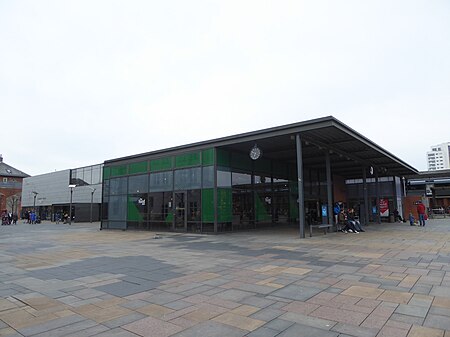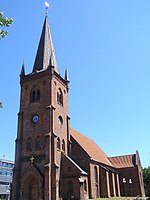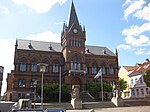Vejle railway station
1868 establishments in DenmarkDanish railway station stubsRailway stations in Denmark opened in the 19th centuryRailway stations in the Region of Southern DenmarkRailway stations opened in 1868

Vejle railway station, also known as Vejle Transit Centre (Danish: Vejle Trafikcenter), is a railway station serving the town of Vejle in East Jutland, Denmark.The station is located on the Fredericia-Aarhus railway line from Fredericia to Aarhus and is the southeastern terminus of the Vejle-Holstebro railway line from Vejle to Holstebro. It offers direct InterCity services to Copenhagen, Hamburg, Struer, Aarhus and Aalborg as well as regional train services to Aarhus, Fredericia, Herning, and Struer. The train services are operated by DSB and Arriva.
Excerpt from the Wikipedia article Vejle railway station (License: CC BY-SA 3.0, Authors, Images).Vejle railway station
Reinholdts Plads, Vejle Lille Grundet
Geographical coordinates (GPS) Address Nearby Places Show on map
Geographical coordinates (GPS)
| Latitude | Longitude |
|---|---|
| N 55.706388888889 ° | E 9.5369444444444 ° |
Address
Vejle
Reinholdts Plads
7100 Vejle, Lille Grundet
Region of Southern Denmark, Denmark
Open on Google Maps










